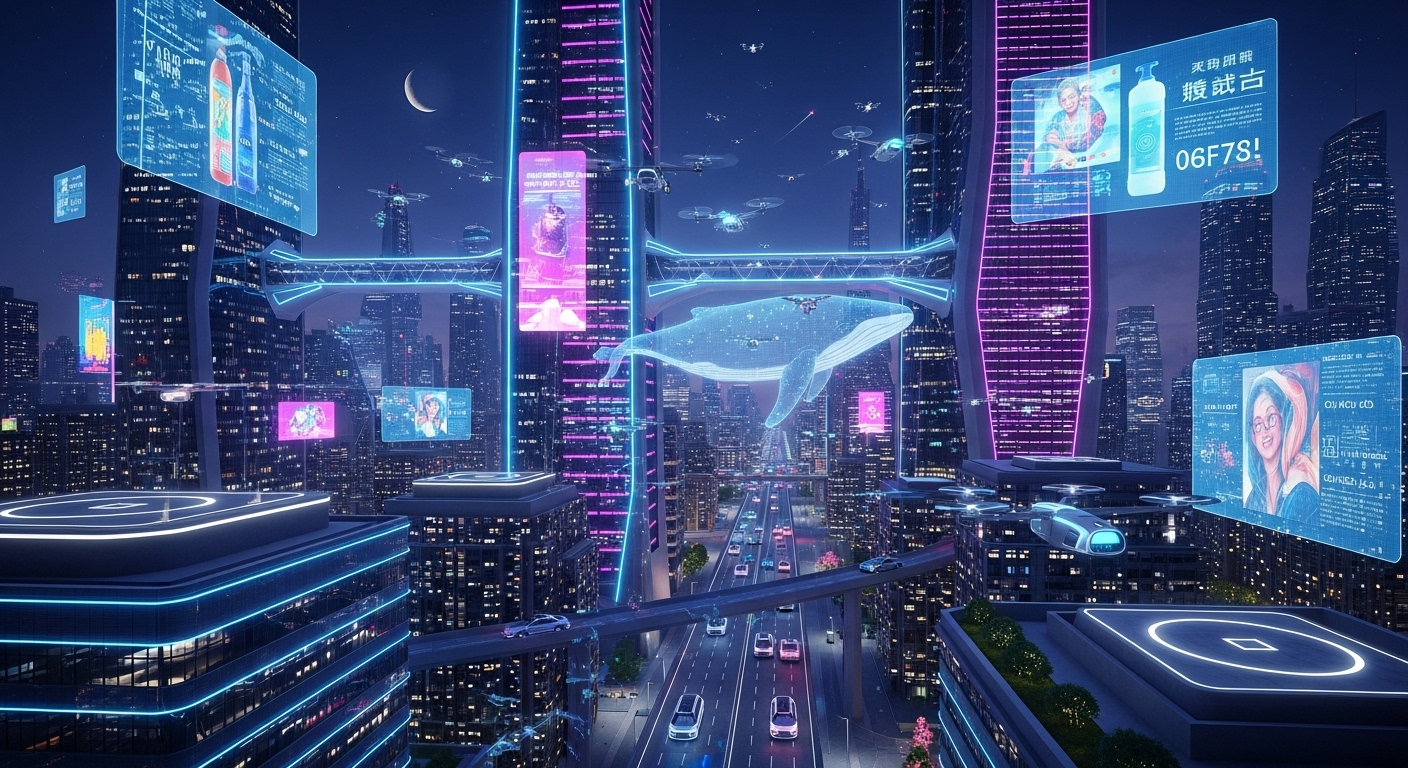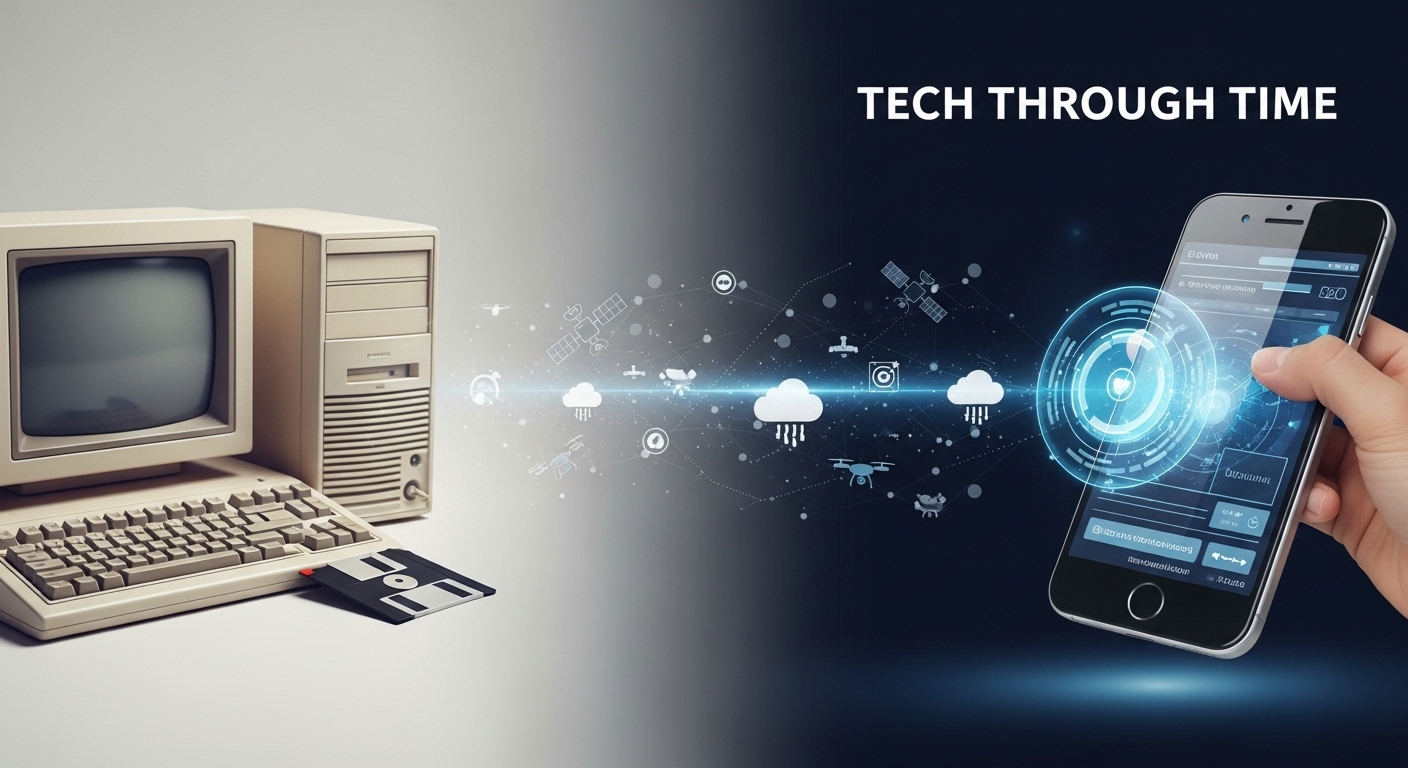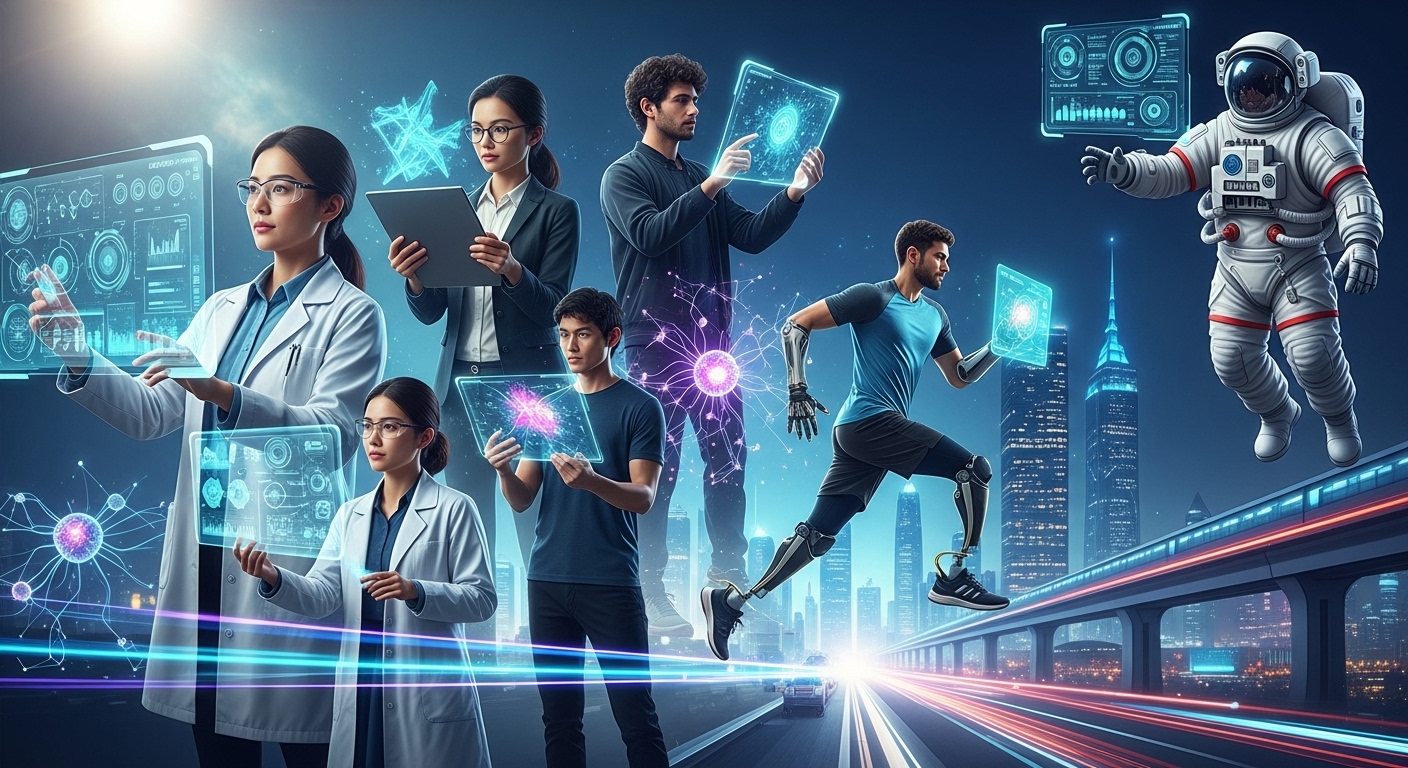Introduction to Modern Technology
Technology has become the backbone of modern society. From smartphones to artificial intelligence and quantum computers, the world is more connected, efficient, and innovative than ever before. Technology is not limited to gadgets and devices, but extends to systems, software, networks, algorithms, and even philosophies that drive innovation. Today, technology affects everything from how we communicate to how we work, learn, and create.
This blog explores the vast landscape of technology, diving into the evolution of computing, the rise of artificial intelligence, the transformation of industries, and the future of digital innovation. There is no specific topic boundary, allowing us to explore as many areas of the tech world as possible.
A Brief History of Technology Development
Technology did not emerge overnight. It began with basic tools created by early humans to make survival easier. Fast forward to the industrial revolution, when machines transformed agriculture, manufacturing, and transportation. Steam engines, electricity, and telegraphs were early technological marvels that paved the way for modern innovation.
The twentieth century witnessed breakthroughs in electronics with the invention of transistors, the microchip, and computers. The development of the internet and mobile technology revolutionized communication. Each decade brought new advancements, shaping the future of human civilization.
The Digital Age and the Rise of Computers
Personal computers marked the beginning of the digital age. Early computers were massive and could only be used by governments or large companies. Over time, computers became smaller, more affordable, and more powerful. Laptops, desktops, and tablets brought computing power to households across the world.
Operating systems like Windows, macOS, and Linux gave structure to computers and made them easy to use. Software such as word processors, spreadsheets, and graphic design tools enabled people to work, create, and organize with ease. The internet opened the door to global communication and information sharing, making computers indispensable in daily life.
The Power of the Internet
The internet is arguably the most influential innovation of modern times. It connects billions of devices and serves as a platform for communication, entertainment, education, and commerce. Social media platforms transformed the way people interact, allowing them to share their thoughts, images, and videos with a global audience.
Businesses operate digitally using websites, cloud platforms, and online transactions. The Internet of Things integrates everyday objects like smart TVs, thermostats, and watches into the digital ecosystem. Every click, search, and interaction online generates data that fuels future technologies and decisions.
Artificial Intelligence and Machine Learning
Artificial intelligence is one of the most significant technological advancements of the twenty-first century. AI enables machines to perform tasks that typically require human intelligence, such as understanding speech, recognizing images, making decisions, and solving problems. Machine learning, a branch of AI, allows systems to learn from data and improve over time.
AI powers voice assistants, language translators, recommendation systems, self-driving cars, and medical diagnosis software. It is used in education, finance, marketing, entertainment, and even agriculture. Machine learning algorithms analyze patterns, predict trends, and help businesses make better decisions. AI is no longer science fiction but an essential part of everyday life.
Robotics and Automation
Robotics combines AI, engineering, and mechanics to create machines that can perform physical tasks. Robots are widely used in factories to assemble products with speed and precision. Automation has replaced repetitive and dangerous tasks, increasing safety and productivity.
In healthcare, robotic surgery allows doctors to perform delicate procedures with greater accuracy. Household robots like vacuum cleaners and lawn mowers assist in daily tasks. Humanoid robots are being developed to interact with humans in natural ways. Automation is transforming industries by reducing costs and increasing efficiency.
Cloud Computing and Data Storage
Cloud computing allows users and businesses to store and access data on remote servers instead of local devices. This technology offers flexibility, scalability, and cost savings. People can access their files, photos, and documents from any device connected to the internet.
Companies use cloud platforms to host websites, manage databases, run applications, and analyze data. Cloud storage protects data from loss due to device damage or theft. It supports remote work and global collaboration. The shift from physical storage devices to cloud-based systems represents a major transformation in how we manage information.
Big Data and Data Analytics
Every second, a massive amount of data is generated through smartphones, social media, sensors, and online transactions. Big data refers to large sets of structured and unstructured data that cannot be processed with traditional tools. Data analytics uses algorithms and software to extract valuable insights from this data.
Businesses analyze customer behavior, market trends, and operational efficiency using data analytics. Governments use data to improve public services and create smarter cities. Healthcare organizations study patient records to predict diseases and create personalized treatments. Data has become a digital currency that drives innovation and decisions.
Cybersecurity Challenges in the Digital Era
As technology grows, so do threats. Cybersecurity is essential in protecting digital systems, networks, and data from attacks. Hackers use viruses, malware, and phishing techniques to steal sensitive information or disrupt operations. Cyberattacks can target individuals, companies, or even entire nations.
Strong passwords, encryption, firewalls, and security software are basic protections. Organizations employ cybersecurity experts to monitor systems and prevent breaches. Governments create regulations to protect citizen data and ensure privacy. Cybersecurity is a continuous battle between attackers and defenders in the digital world.
Blockchain and the Future of Digital Trust
Blockchain is a decentralized digital ledger that records transactions securely. It is transparent, tamper-proof, and distributed across multiple computers. Blockchain gained popularity through cryptocurrencies, but its potential goes beyond digital money.
Industries like supply chain, healthcare, real estate, and finance use blockchain to track data, verify authenticity, and reduce fraud. Smart contracts automate agreements without the need for intermediaries. Blockchain brings trust to digital transactions and could reshape how we exchange value and information.
The Evolution of Smartphones and Mobile Technology
Smartphones have become an extension of human life. They combine communication, entertainment, photography, navigation, and productivity into one device. Mobile technology has advanced rapidly, with faster processors, larger storage, high-quality cameras, and long-lasting batteries.
Mobile apps serve almost every need, from banking to gaming and education to shopping. Wireless connectivity technologies like 4G, 5G, and Wi-Fi enable faster internet speeds and smoother communication. Smartphones have transformed social interactions, work habits, and how we access information.
Virtual Reality and Augmented Reality
Virtual reality creates immersive digital environments using headsets and motion tracking. Users can explore virtual worlds for gaming, education, training, and therapy. Augmented reality overlays digital information onto the real world using smartphones or AR glasses.
Industries use VR and AR for simulations, architectural design, medical training, and marketing. For example, surgeons practice procedures in virtual environments before performing them on real patients. AR enhances shopping experiences by allowing customers to visualize products in their homes before purchasing. These technologies are reshaping how we experience reality.
The Influence of Technology on Education
Technology has transformed education by making learning more interactive, accessible, and personalized. Online learning platforms allow students to access courses from anywhere in the world. Digital classrooms enable teachers to share materials, assign tasks, and communicate with students in real time.
Artificial intelligence provides personalized learning paths, helping students learn at their own pace. Educational apps and games make learning fun and engaging. Virtual labs and simulations allow students to experiment without physical resources. Technology has broken geographical barriers and opened opportunities for lifelong learning.
Technology in Healthcare and Medicine
Healthcare has seen tremendous advancements due to technology. Medical devices, imaging tools, and robotic surgery have improved diagnosis and treatment. Wearable devices track heart rate, steps, and sleep patterns, helping individuals monitor their health.
Artificial intelligence analyzes medical records to detect diseases like cancer and diabetes early. Telemedicine allows doctors to consult patients remotely. 3D printing creates customized prosthetics and implants. Biotechnology and genetic engineering offer new solutions to complex medical problems. Technology is saving lives and improving health outcomes.
Smart Homes and the Internet of Things
Smart homes use connected devices to create convenience, efficiency, and security. Smart lights, thermostats, doorbells, and appliances can be controlled using smartphones or voice assistants. The Internet of Things connects these devices to the internet, allowing them to communicate and automate tasks.
For example, smart thermostats adjust temperatures based on user preferences, saving energy. Smart security cameras monitor homes and send alerts when unusual activity is detected. Smart kitchens help manage groceries and cooking. The smart home revolution is turning ordinary houses into intelligent living spaces.
Transportation Technology and the Future of Mobility
Transportation has undergone major innovations thanks to technology. Electric vehicles reduce pollution and reliance on fossil fuels. Self-driving cars use sensors, cameras, and AI to navigate roads and avoid accidents. Ride-sharing apps provide convenient and affordable transportation options.
High-speed trains, drones, and hyperloop concepts aim to make travel faster and more efficient. Smart traffic systems monitor and control traffic flow to reduce congestion. Technology is reshaping mobility by making transportation safer, cleaner, and more accessible.
Space Technology and Exploration
Space technology has advanced significantly, allowing humans to explore beyond Earth. Satellites provide communication, weather forecasting, navigation, and scientific data. Space agencies and private companies are developing rockets and spacecraft to explore the moon, Mars, and beyond.
Robotic missions study planets, asteroids, and distant galaxies. Space telescopes capture images of the universe, revealing its mysteries. The dream of colonizing other planets is no longer impossible, as technology continues to push the boundaries of space exploration.
Ethical Concerns in Technology
While technology brings progress, it also raises ethical questions. Privacy is a major concern as companies collect and store personal data. Artificial intelligence can cause job displacement and bias in decision-making if not designed responsibly.
Robots and automation may replace human workers, creating unemployment in some sectors. The digital divide separates people with access to technology from those without, leading to inequality. Ethical guidelines and regulations are necessary to ensure technology is used for the benefit of all.
The Future of Technology
The future of technology holds endless possibilities. Innovations like quantum computing promise to solve complex problems that current computers cannot. Biotechnology may cure genetic diseases and extend human lifespan. Artificial intelligence could reach new levels of creativity and understanding.
Smart cities powered by renewable energy and advanced infrastructure could offer sustainable living. Holograms, flying cars, and brain-computer interfaces might become everyday reality. The pace of innovation shows no sign of slowing down, and the future will be shaped by the choices we make today.
Conclusion
Technology is the driving force of modern civilization. It influences every aspect of life, from communication and education to healthcare and entertainment. The journey of technology is a story of human creativity, innovation, and determination. As technology continues to evolve, it brings both opportunities and challenges.
Understanding technology is essential for navigating the future. Whether you are a student, professional, or lifelong learner, staying informed about technological trends helps you adapt and grow. The world of technology is vast, fascinating, and full of potential, and we are just at the beginning of its extraordinary journey.



